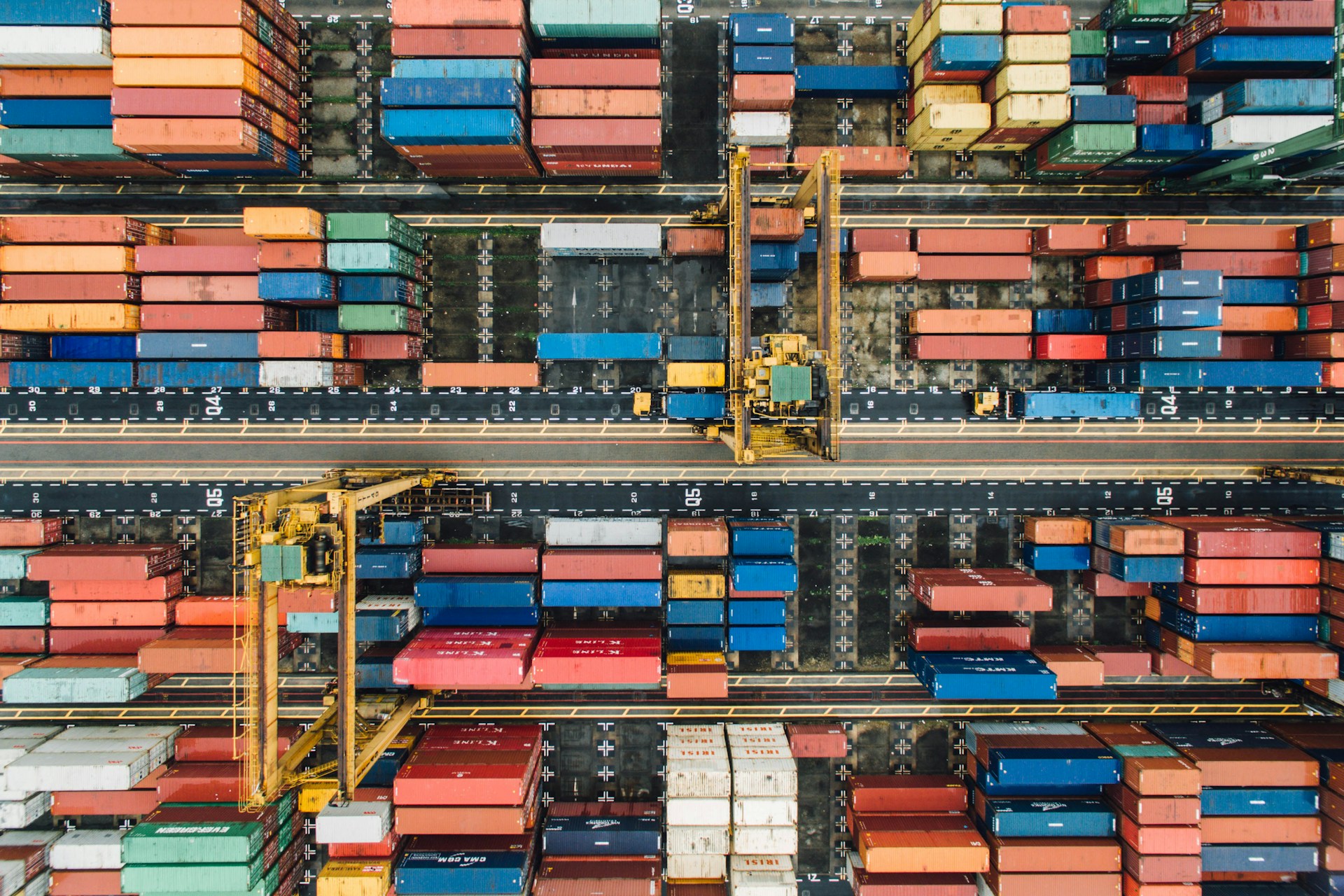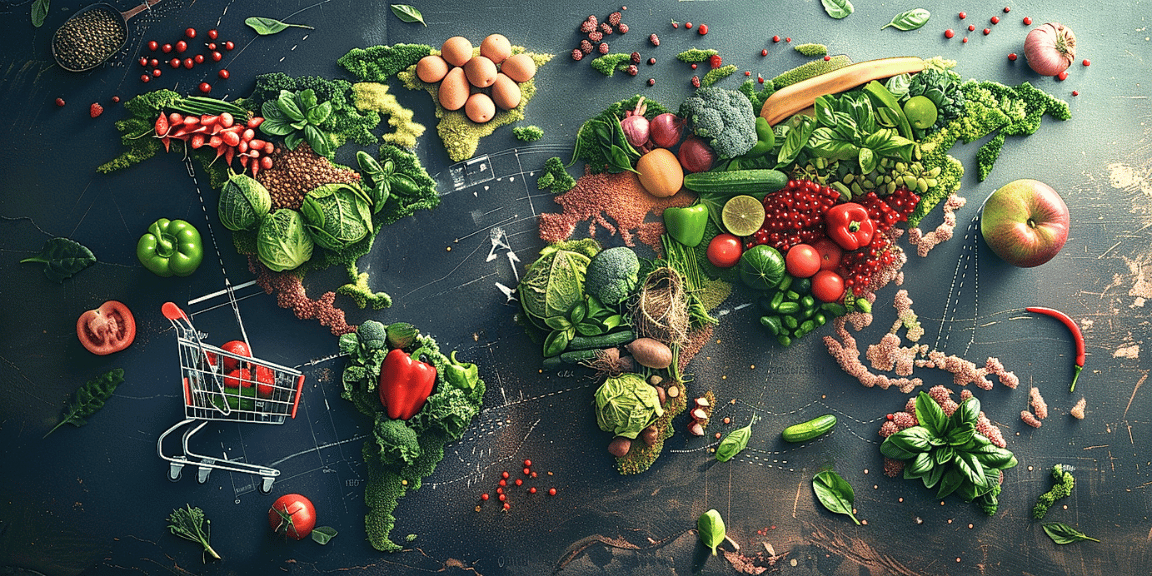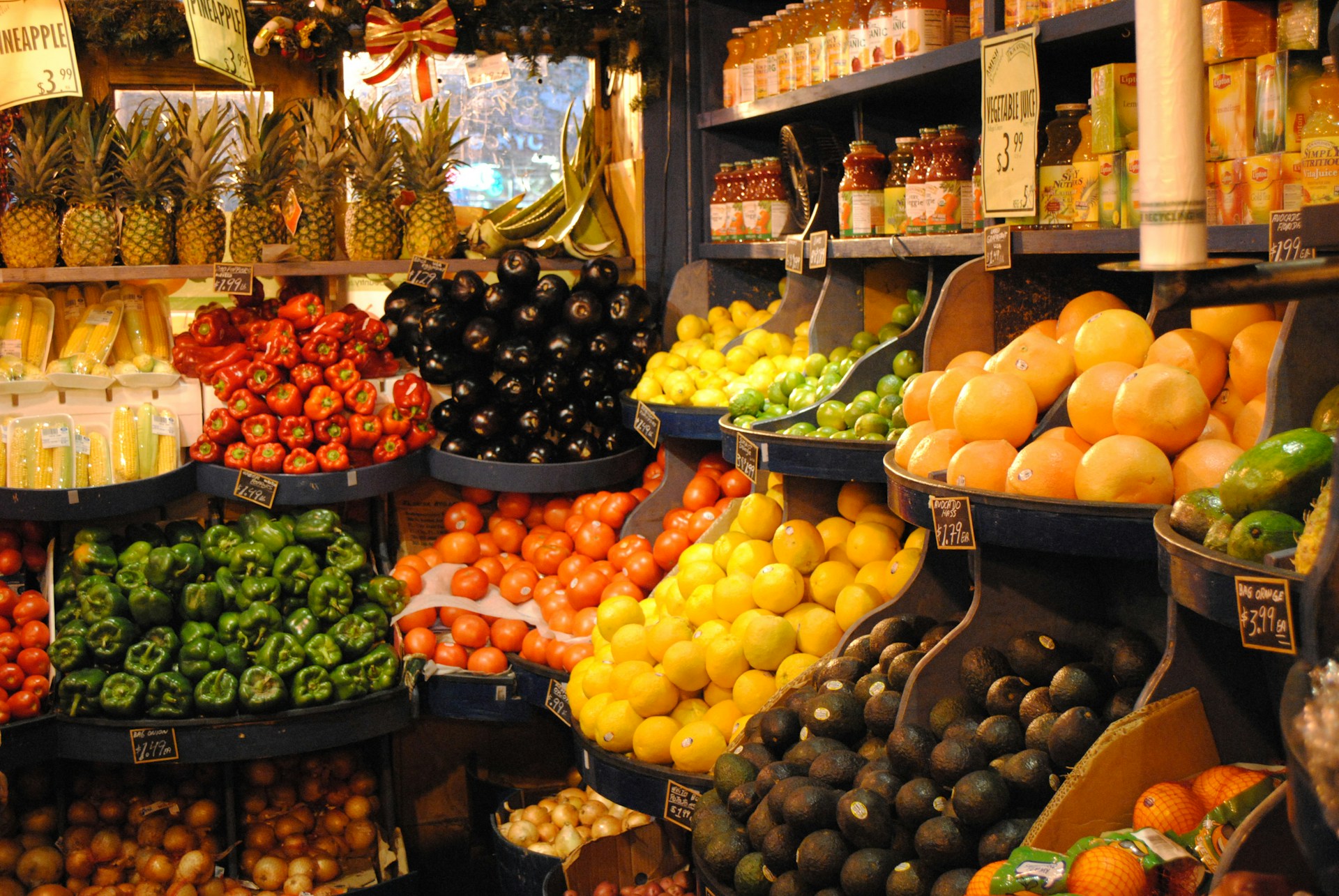The world of produce distribution is fast-evolving, and everyone engaged in the sector needs to stay alert to the latest trends and innovations.
These shifts are greatly influenced by logistics technology, sustainability concerns, as well as consumer preferences.
As such, any change within the logistics space directly impacts every link of the supply chain.
This, in turn, affects not only how these products reach the consumer market, but also how they are grown, stored, and managed across the supply chain.
Today, we will delve deep into these trends and the impacts they exert on the industry as a whole.
Understanding these transformational trends is vital for companies seeking strategic growth and edge in the hyper-competitive produce landscape.
Contents
- Logistics & Impact Trends In Produce Distribution
- 1. Increased reliance on cold chain logistics
- 2. Growing Adoption of Green Logistics
- 3. Rise in direct-to-consumer distribution models
- 4. Increased use of logistics automation technology
- 5. Shift towards local sourcing reducing emissions
- 6. Greater emphasis on food safety regulations
- 7. Resilience planning due to climate change impacts
- The Bottom Line
Logistics & Impact Trends In Produce Distribution
1. Increased reliance on cold chain logistics
At the crux of effective produce distribution in the 21st century, lies an increased reliance on cold chain logistics.
Historically, fruits and vegetables were transported near or at room temperature, with a range of sophisticated methods employed to extend their shelf-life.
However, as the volume and variety of perishable commodities rose dramatically, and distribution routes became more complex, the need for cold chain logistics became indispensable.
“The increasing reliance on cold chain logistics are fundamentally reshaping produce distribution paradigms and revolutionizing the fresh produce market.”
Gone are the days where small-scale local grocers manage supply in isolation.
Now, a network of growers, distributors, retailers, and consumers are interconnected by a robust cold chain, ensuring fresh produce gets to the right place at the right time in a suitable condition.
The cold chain logistics process starts at the point of harvest, where fresh produce is pre-cooled and stored to maintain the optimal temperature and humidity.
This approach locks in freshness and retards the growth of pathogens that can degrade food quality or cause foodborne illnesses.
During transportation, temperature-controlled vehicles are used to keep produce at preferred environmental conditions.
Careful management of the cold chain is imperative in each stage of the distribution process, it ensures the food’s safety and preserves its nutritional integrity as well.
Advanced technologies, like smart sensors, provide real-time data to monitor and manage temperature fluctuations, ensuring seamless cold chain management.</b
While this technology-driven approach demands significant investment, the benefits gained in terms of reduced wastage and increased shelf-life can be catastrophic.
Furthermore, increased consumer awareness about food safety and their growing preference for fresh, high-quality produce is compelling distributors to tighten their cold chain protocols.
Meeting these high standards is becoming a competitive advantage in the increasingly discerning fresh produce market.
Lastly, the role of cold chain logistics in disaster response and distribution of critical supplies like vaccines further underscores its importance.
Overall, the growing reliance on organized and efficient cold chain logistics is a trend that is here to stay.
2. Growing Adoption of Green Logistics
The adoption of green logistics is becoming increasingly prevalent in the produce distribution industry.
These practices are being employed as part of a broader commitment to environmental responsibility within the industry.
By incorporating green practices, companies can drastically reduce their carbon footprint and contribute to global environmental conservation efforts.
Green logistics practices not only help in preserving the environment, but can also improve a company’s reputation and profitability.
One key practice is the use of energy-efficient vehicles for transportation.
These may include hybrid or electric trucks that emit fewer greenhouse gases compared to their traditional petrol or diesel counterparts.
This is in response to the alarming rise in global climate change indicators, with logistics and transportation being a significant contributor to greenhouse gases.
Another growing trend is the use of recyclable or biodegradable packaging materials.
This reduces the amount of waste that ends up in landfills and contributes to the circle economy.
Furthermore, many companies are now tracking their emission levels and have set ambitious goals to achieve net-zero emissions in the future.
An important step towards this is the use of renewable energy sources such as solar or wind energy in their operations.
Routes are also being optimized to reduce the number of miles traveled, improving fuel efficiency and reducing emissions.
These changes are increasingly expected by consumers, who are becoming more aware and concerned about the environmental impact of their purchases.
This shift towards environmentally friendly practices in distribution is likely to continue to gain momentum in the coming years, driven by both regulatory pressure and changing consumer demand.
As green logistics practices become more prevalent, this will significantly affect the operations and strategies of companies in the produce distribution industry.
3. Rise in direct-to-consumer distribution models
One major trend within the logistics and produce distribution sector has been the rise in direct-to-consumer distribution models.
This shift represents a significant change in how logistics providers, farmers, and manufacturers are interacting with end consumers.
Businesses in the industry are optimizing their supply chains to make it possible for consumers to buy produce directly from the source.
This business model, often looped in with the umbrella term ‘farm-to-table’, can lead to better quality and fresh produce for the end consumer, bypassing multiple steps that are commonly present in the traditional distribution model.
Another factor driving this trend is the increasing demand for organically grown products and consumers’ interest to know the origin of their food.
This drives growers and producers to choose direct distribution channels to maintain the transparency customers seek.
With direct-to-consumer models, logistics providers are forced to rethink their strategies from a process that catered to retail distribution, to one that must now manage individual orders and improve shipping efficiency.
Implementing a direct-to-consumer model is not without its challenges.
It requires a certain level of business agility and access to real-time information and data analytics.
Distributors have to find innovative solutions to meet specific consumer demands, including advanced software and automated tracking systems.
A well-orchestrated logistics strategy can overcome these challenges and result in reduced delivery times and improved customer satisfaction.
In the long term, this distribution model could lead to a more sustainable and transparent food supply chain.
This approach makes it easier for consumers to support local businesses and farmers, contributing to local economies and lessening the environmental impact of traditional distribution models.
Furthermore, it’s a step in the evolution to a more consumer-oriented food system, involving changes from how food is grown and harvested, to how it’s transported and sold.
The growth in the direct-to-consumer distribution model represents an important trend in the logistics and produce distribution industry, offering potential benefits to consumers, businesses, and the environment.
Understanding and adapting to this trend will be crucial for businesses involved in logistics and supply chain management in order to remain competitive in the changing landscape of food distribution.
4. Increased use of logistics automation technology
The integration of automation technology in logistics has been on a significant rise worldwide.
One can attribute this spike to the fact that automation tends to optimize and streamline processes, thus enhancing efficiency and productivity in the distribution of produce.
Logistics automation includes the use of robotics, automated sortation systems, conveyor systems, automatic storage and retrieval systems, and warehouse management systems, all of which have gained substantial popularity in recent years.
The consistency of using logistics automation lessens the likelihood of errors arising from repetitive tasks, improving the overall quality of produce distribution.
Moreover, the application of logistics automation technology can directly influence the speed and capacity of product deliveries, shortening the distribution time and thus rapidly meeting consumers’ demands.
Notably, automated systems also facilitate inventory tracking, reducing the time-consuming task of manual tracking and thus promoting accuracy in product supply and availability.
Moreover, automation can lead to significant cost savings as it reduces the need for manual labor and minimizes product loss due to spoilage or mishandling.
Another substantial advantage of logistics automation is that it allows for scaling operations with minimal disruptions.
Such systems can be easily upgraded or expanded, thus enabling businesses to adapt quickly to market dynamics or changes in consumer demand.
One must note, logistics automation also enhances safety in the produce distribution process by limiting human intervention in potentially hazardous tasks or environments.
By reducing the risk of injuries and ensuring compliance with health and safety regulations, automation can simultaneously boost staff morale and company reputation.
However, despite the myriad benefits, the adoption of logistics automation also comes with challenges and considerations.
For one, the initial investment in automation technology might be considerable, potentially hindering small to medium-sized distributors from embracing automation.
Moreover, training staff to operate and maintain these systems might require additional time and resources.
Lastly, the complexities involved in integrating these automated technologies with existing software platforms can pose significant operational challenges.
Despite these challenges, the increase in the use of logistics automation technology is an unavoidable evolution in the produce distribution industry.
5. Shift towards local sourcing reducing emissions
One significant trend in the logistics and produce distribution sector is the shift towards local sourcing to reduce emissions.
Local sourcing, sometimes referred to as locavore movement, is not a new concept, yet its application has been revitalized in response to growing environmental concerns.
In the context of logistics, local sourcing essentially involves purchasing goods and materials from suppliers in close geographical proximity.
This practice notably reduces the need for long-haul transport, which in turn lowers the amount of greenhouse gas emissions associated with getting the produce from the farm to the consumer’s table.
Local sourcing can significantly contribute to lowering a company’s carbon footprint through reduced fuel consumption and fewer CO2 emissions.
Not only does it mitigate environmental impacts, it also fosters local economies and supports community development.
Many logistics providers and retailers are aligning with this sustainability trend, incorporating local sourcing into their strategies as a way to demonstrate their commitment to combating climate change.
Consumers, too, are increasingly supportive of local sourcing, driven by a greater awareness of its environmental benefits and a desire for fresher, locally produced goods.
The shift towards local sourcing, though, is not without its challenges, particularly when it comes to capacity and scalability.
Supply may be limited or inconsistent, depending on the time of year, the region’s climate, and the type of produce.
Yet, innovations and advancements in agriculture and distribution methods continue to create possibilities for overcoming these obstacles.
Emerging technologies for indoor and vertical farming, for instance, can allow for reliable, year-round production of certain types of produce, regardless of external weather conditions.
Moreover, with the right planning and coordination, logistics providers can efficiently orchestrate local sourcing strategies that cater to specific market demands and seasons.
The shift towards local sourcing in the logistics and produce distribution sector thus offers both a sustainable solution to environmental challenges and a promising avenue for industry innovation.
As this trend continues to gain momentum, it will undoubtedly play a significant role in shaping the future of the sector, with implications for environmental policy, entrepreneurship, and consumer behavior.
6. Greater emphasis on food safety regulations
The importance of food safety regulations within the logistics and produce distribution industries cannot be understated.
As regulations become stricter and requirements increase, the need for companies within the industry to not only understand these regulations but implement them into their distribution processes is becoming increasingly crucial.
Furthermore, the adoption of regulations is significantly impacting how companies operate and organize their logistics, necessitating innovative solutions to ensure compliance.
With the push for stricter food safety regulations, logistics and produce distribution companies are experiencing a transformative shift that is changing their operating procedures.
The rise in foodborne illnesses and the potential for widespread outbreaks have highlighted the essential role that safety regulations play in protecting public health and maintaining confidence in the food supply.
In response to these concerns, many regulatory bodies are introducing more stringent measures, including increased testing and traceability requirements.
These requirements can greatly impact logistics and produce distribution companies, especially those that have traditionally relied on more relaxed regulations and loose oversight.
Alongside this, the pressure from consumers for increased transparency in the food chain is another driving force behind the increased emphasis on food safety regulations.
Customers increasingly want to know where their food is sourced, how it is processed, and that it is safe to eat – and they are expecting companies to provide this information readily.
Consequently, logistics and produce distribution companies are having to find ways to incorporate this into their processes, or risk falling behind their competitors.
This heightened focus on safety regulations is also encouraging the deployment of innovative technologies aimed at improving tracking and traceability within the food supply chain.
By adopting these technologies such as IoT, Artificial Intelligence, and Blockchain, organizations can better manage their supply chains, ensure compliance with regulations, and reduce the risk of foodborne illness outbreaks.
These technology solutions can also help organizations understand where potential weaknesses or risks may lie in their supply chain – helping them to act preemptively and avoid costly penalties for non-compliance.
Overall, the trend towards greater emphasis on food safety regulations within the logistics and produce distribution industries is having a transformative effect on how companies approach their operations.
Innovation in technology and an increased focus on transparency and accountability are becoming key tools for enterprises looking to keep up with these evolving regulations and maintain the trust and confidence of their consumers.
7. Resilience planning due to climate change impacts
Climate change is affecting every industry, and the logistics and distribution sector is no exception.
As part of their operations, businesses need to implement resilience planning to anticipate, respond to, and recover from climate-induced disruptions.
This is particularly relevant for the distribution of fresh produce, where unexpected changes in climate can have significant impacts on quality and availability.
In fact, the repercussions of changing weather patterns on harvest timelines and locations can cause disruptions and inconsistencies in the supply chain.
Therefore, to ensure that fresh produce continues to reach consumers without interruption, attention must be given to building resilience into the logistics operations.
Resilience planning includes considerations such as diversifying source locations to spread risk, and identifying and planning for potential vulnerabilities in transportation routes and methods.
For example, logistics may need to change modes of transportation depending on weather patterns, or seek out local suppliers to reduce reliance on a single region.
Additionally, resilience planning requires ongoing monitoring and adaptation in response to changing circumstances, as climate change continues to evolve unpredictively.
This involves tracking changes in climate patterns and assessing their potential impact on current and future logistics operations.
Effective resilience planning can help companies not only mitigate disruptions caused by climate change, but also uncover new opportunities for enhancing efficiency and profitability.
For example, establishing closer relationships with local growers might reduce transportation costs and carbon emissions, while increasing the freshness of the product.
Furthermore, as consumers become more concerned about climate change, companies that demonstrate a strong commitment to sustainability and climate resilience may gain competitive advantage.
Thus, while the challenges posed by climate change are significant, they also prompt innovation and adaptation in the logistics and distribution industry.
As an industry that plays a significant role in both contributing to and mitigating climate change, logistics are not only position to lead the change, but also to benefit from it.
Inevitably, resilience planning due to climate change is becoming a key part of the strategic decision-making process in the logistics and distribution of fresh produce, and is likely to continue to shape the industry in the foreseeable future.
The Bottom Line
The escalating reliance on cold chain logistics along with the rising acceptance of green logistics manifests a crucial turn in the logistics industry.
The shift toward local sourcing paves the way for a more sustainable future by significantly reducing carbon emissions.
Simultaneously, the increased use of automated technology in logistics optimization and the growth of direct-to-consumer models have spearheaded new improvements in the industry.
Amplified focus on food safety regulations is safeguarding public health and enforcing higher standards in the supply chain.
Lastly, the adaptation of resilience strategies to deal with the impacts of climate change reflects the industry’s proactive steps toward addressing global concerns.
This change transforms not just the logistics field but contributes to better societal and environmental conditions.




